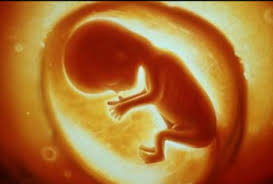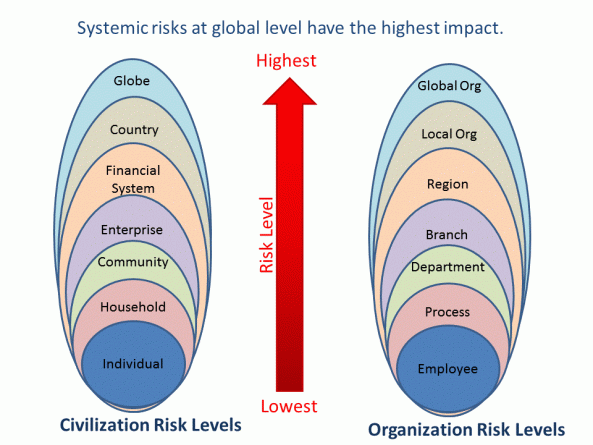Lettuce, grated cheese, bread, and turkey make a delicious sandwich. Unfortunately, Supreme Court of India has ordered LGBTs to cold turkey their sexual activities; else, they will face criminal prosecution. The poor souls are sandwiched between the Delhi High Court order that liberated them four years back and the Supreme Court latest order banishing them into dark ages. Maybe banning judges from issuing judgments on the last day of service that impact nearly 10% of the nation’s population would benefit. Can India in this day and age declare 12 million Indians as potential criminals because of sexual preferences?
1. Is it a Sin?
If God created humans, then why did he create LGBTs if they are supposedly immoral? Do we say a person is evil because he has one blue eye and one black eye? Are differently abled people born criminals? In the worst-case scenario, one can say LGBTs are sexually differently abled. No, I am not propagating this viewpoint. There is nothing wrong with LGBTs physically, morally or intellectually. They are as normal as heterosexuals are. Heterosexuals’ intolerant attitude towards homosexuals is wrong.
Heterosexuals must stop blaming the victim under the guise of religion. In ancient India LGBTs were part of the mainstream population and respected. For instance, in Mahabharata, Arjun dresses up as a woman for one year to disguise himself. Amba, whom Bhishma refused to marry, is reborn as Shikhandini. She exchanged her sex with a Yaksha who wanted to be a female, to punish Bhishma for rejecting her in the previous birth. Lord Shiva’s one form is of Ardhanarishvara – meaning the lord who is half woman. In one story, Lord Vishnu becomes Mohini, has sexual relationship with Lord Shiva and has children from him.
The Ottoman Empire funded Islam propagation in Middle East from the 13th century. It decriminalized homosexuality during Tanzimat period (1839-76). In Persia, homosexuality and homoerotic expressions were accepted in public places. Male houses of prostitution were legally recognized and paid taxes. (1501-1723)
Hence, how can it be possible when the same religions are being followed from middle ages, previously homosexuality was an acceptable act, and now in 21st century it becomes a criminal act?
Section 377 was imposed by the British Raj in India in 1857 to stop the British homosexuals fleeing to India. Now the western world has accepted homosexuality and Indian politicians are propagating repressive policy to meet their political ambitions. As usual, they have got it backwards.
2. It is torture?
In my teens, I turned rather precocious. When my father and I went out, I checked out guys on the road.
When dad noticed my behaviour, he was horrified. Here is the conversation that followed:
Dad: What are you doing Sonia?
Irrepressible me: My eyes turn sore from studying, I am checking out eye candies to relax them.
Aghast dad: Your sister would never do such a thing.
Brazen me: Yeah, isn’t she a duh. What a waste of good looks!
Horrified dad: Your mom….
Unfazed me: If I had mom’s looks, I could get into so much trouble.
After a few weeks, dad found a practical solution to my problem. Whenever we went out, I was driving and he sat in the front seat, looking around. When I asked him why, he responded – “Health issues, heart problem, doctors told me to reduce stress.” Meow!
Every heterosexual child has a similar story to tell. As the child becomes an adolescent, parents try to gear their emotions, desires, and social behaviour according to the cultural norms of the society. The heterosexual adolescent runs to his/her parents for solace when facing the first heartbreak and rejection.
In contrast, see the nightmare an adolescent faces when s/he realizes that they are attracted to the same sex and not the customary opposite sex. Erik Erikson, the world-renowned psychologist developed the eight stages of psychological identity development model. According to him, between the age of 13-19 years, adolescents address the questions – “Who am I? What can I be?” through social relationships. This is the stage of developing one’s own identity and if a person is unable to do so, they live with role confusion during adult age. Between 20-39 years, an adult addresses the question – “Can I love?” through romantic relationships. During this stage, a person forms intimate relationships or if s/he is unable to answer the question, lives an isolated life.
An LGBT teenager learns to attach shame and guilt for their sexual desires. The teenagers realize that if they confide in their parents, they might reject them. Their friends will socially isolate and ridicule them, their teachers will rusticate them from school, and outsiders will exploit them. The intolerant society gives them a gag order for life. The children have no adult or peer to talk to and have to live through this nightmare all alone.
As an adult, LGBTs realize that they are capable of becoming celebrated artists, musicians, philosophers, scientists, corporate leaders and sports person as long as they are willing to live a lie. With their capabilities and talent, they can earn power, fame, and money. However, they don’t have the right to hold hands of a person they love. The heterosexuals have taken their right to live a happy and fulfilling life.
Heterosexuals don’t need to put homosexuals behind bars as criminals. They have already chained them for life and prescribed them extreme psychological torture. In desperation, they join social groups, religious orders and change countries to get social acceptance and a well-defined identity. Some fervently pray to God for mercy, some turn atheists. Others in anger wish to punish heterosexuals in the same way. They want to hurt the opposite gender for making them feel inadequate. The ultimate revengeful desire would be to make heterosexuals face social rejection and isolation, to show them the torturous lives homosexuals have to live.
Unfortunately, humans are geared towards blaming the victim. In rape cases, the woman is blamed – why did she go out, why was she walking alone of the road, why was she wearing a revealing dress? Humans tend to blame others for their misfortunes, because they wish to live in a predictable world and protect themselves from feeling personally threatened. The idea behind is to tell ourselves that if we take care of ourselves, things will work out reasonably well and our world will be safe. Another woman can’t accept the fact that she escaped being a rape victim by sheer luck and she has no control on the external threat. Similarly, heterosexuals can’t accept that they are so because of sheer luck, and they could easily be homosexuals. There is still no concrete evidence that nature or nurture turns a person into a homosexual.
As we say in case of women equality, that we need men to come forward and change the thinking of other men, women alone can’t fight for equality. We need to take a similar stance for LGBTs. Heterosexuals need to come forward and embrace the cause of LGBTs equality. All that LGBTs are looking for is social acceptance. Why not give it to them?
3. Organizations role
A decade back, I was working in Intel. One day my boss asked me to check LGBT policies as she needed to find a solution to a small issue. Stunned, I asked – “Which policies?” I had never read an organization’s LGBT policies in my career. Amused at my cluelessness, she gave me the intranet site name.
I was impressed with the site. Intel as usual had dealt with a difficult topic humanely, sensitively, openly and constructively. The introduction of the site was written by one of the heads of chip design division, a lesbian lady. She narrated her story of coming out, the stigma and social rejection she faced in her life, and what heterosexuals need to do the make LGBTs feel part of the organization. There were other similar mind-blowing stories. Additionally, a lot of reading material, policies, and guidance notes were available on the site to educate the employees.
Think would a customer refuse to purchase an Intel laptop because a division headed by a lesbian developed the processing speed. Our response would be – “Who cares, we want fast machines”. Exactly, we shouldn’t be concerned!
Closing thoughts
Indian Government and politicians need to move out of the bedroom of consenting adults. The Indian police are unable to manage and solve rape cases, and now it wishes to deal with the whole LGBT population as criminals. Hitler and Stalin ordered the death of millions to cleanse the population. Is the stance of government to treat LGBTs as criminals any better? Intolerance and disrespect are the main reasons for anger, hatred, and violence in the world. Heterosexuals show intolerance and disrespect every day to LGBTs. Let us collectively weave them in the social fabric of our lives and culture.
 Gandhi ji said cleanliness is next to godliness. He inspired his followers by picking up the broom and leading the cleanliness effort. Prime Minister Modi is taking the same course of action. In this day and age where Indians have started thinking getting their hands dirty to do basic cleanliness chores is beneath their dignity, here is a Prime Minister who is not hesitating to do it himself.
Gandhi ji said cleanliness is next to godliness. He inspired his followers by picking up the broom and leading the cleanliness effort. Prime Minister Modi is taking the same course of action. In this day and age where Indians have started thinking getting their hands dirty to do basic cleanliness chores is beneath their dignity, here is a Prime Minister who is not hesitating to do it himself.





You must be logged in to post a comment.